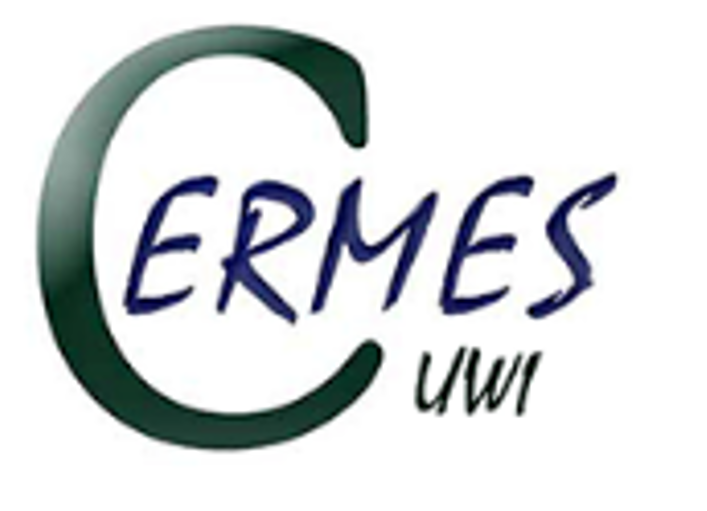What is pelagic sargassum?
Sargassum is a type of brown seaweed. There are more than 300 species of sargassum. Pelagic species are the ones that spend their lives floating freely at or near the ocean surface. The two most common species found in the Atlantic are Sargassum natans and Sargassum fluitans, which are found in free-floating mats in the open ocean.
For further reading: https://doi.org/10.1016/j.scitotenv.2021.152761 and https://tamug-ir.tdl.org/bitstream/handle/1969.3/28843/GCFISargassumFactSheet[1].pdf?sequence=1
Where does sargassum come from?
Sargassum comes from the Sargasso Sea in the North Atlantic Ocean, but it was blown south by unusual ocean currents and winds events. Since 2011, huge amounts of sargassum have appeared across the Atlantic and badly affected coastal countries from the Caribbean and Central America to West Africa.
For further reading: https://www.frontiersin.org/articles/10.3389/fmars.2022.914501/full and https://www.science.org/doi/full/10.1126/science.aaw7912?casa_token=J3-27jiYY-sAAAAA:sD5OLWCU_3qK0FeV618uXbFqbkxKmkVImk_xXfrAAFs2RaZ2rW8RVGwFZhdwtYX1h4QvNyCoa0zy
Is sargassum good?
Sargassum is good when at sea. It provides home and food to many fish and invertebrate species; it acts as nursery for baby sea turtles; and provides food sources for sea birds. However, sargassum is often not so good nearer to land as it brings negative impacts to human economies and health.
For further reading: https://www.intechopen.com/chapters/76196 and https://doi.org/10.1007/s00227-021-03910-2
Does sargassum have negative impacts when it strands on the beaches?
Sargassum piles up on shore, blocks access to the sea, and creates bad smells, itchy skin, and waste when it rots. It affects fisheries and tourism. It also becomes entangled in fishing nets and damages appliances.
For further reading: https://www.sartrac.org/news/sargassum-is-worsening-the-conditions-of-the-poorest-people-in-ghana/ and https://link.springer.com/article/10.1007/s11356-022-22123-8
Can sargassum affect human health?
Yes, sargassum can affect human health when found in land. As beached sargassum decomposes, it releases two potentially toxic gases: hydrogen sulphide and ammonia. These may irritate people’s skin, nose, and throat. People who suffer from asthma or other breathing illnesses might be more sensitive to these gases. However, sargassum is harmless to humans when found in water.
For further reading: https://www.tandfonline.com/doi/full/10.1080/15563650.2020.1789162?casa_token=sSum9-xmTJMAAAAA:vsxbEkoRM_TgxPHpdscfKi2Auc_Z9tZm6uqkkhzXaugxAUAQ0QpU17hRt2mPos9qj4RQ8tXQTkg and https://www.ncbi.nlm.nih.gov/pmc/articles/PMC7790061/
Why is sargassum on the beach so smelly?
Sargassum starts to decompose after 48 hours of being stranded in the beach. As it decomposes it releases hydrogen sulphide which is a gas that smells of rotten eggs.
For further reading: https://www.tandfonline.com/doi/full/10.1080/15563650.2020.1789162?casa_token=e7sScTM2pq8AAAAA:M_85XpzxibnfWGYNgCaSw4_L2AeyeytHWcxy0PsHbEI3bESSUSGI-XyQf5Wf_Tx1wCZqPolmGFA
Can I still swim when there is lots of sargassum?
Swimming on a beach with lots of sargassum can have some risks. Although the algae itself cannot harm your health whilst in water, tiny sea creatures that live in this seaweed can cause skin rashes and blisters.
For further reading: https://www.sciencedirect.com/science/article/pii/S0304377023000207
If I see sargassum on a beach, what should I do?
There are different things you can do when finding sargassum on a beach. First, remember to be careful when swimming and using the space around the seaweed to avoid skin or respiratory irritations. You can also take a picture of the seaweed at the nearest CoastSnap point, if available, to support monitoring efforts.
For further reading: https://www.floridahealth.gov/environmental-health/beach-water-quality/_documents/sargassum-factsheet-appr-final.pdf and https://www.coastsnap.com/
Can we eat sargassum?
No, sargassum should not be eaten! Its biomass can contain arsenic, which is poisonous to people.
Can we feed sargassum to animals?
Sargassum has the potential to be used in animal feeding. It has various minerals and compounds that could benefit animal health if added as an ingredient in low concentrations (below 5%). However, it also has high amounts of salts and potentially toxic elements that limit their use in high quantities in animal feeding.
For further reading: https://link.springer.com/article/10.1007/s10811-022-02877-x
Can sargassum be used to make money out of it?
Sargassum can be used to create a variety of products that can be profitable. Currently, it is being used to make building blocks, as biofuel for cooking and to produce electricity, as fertilizer and compost, as raw material for paper and cosmetic products. However, we need to be careful with applications containing sargassum, especially if they are planned for growing crops or animal feed This is because sargassum can contain high levels of arsenic and of other compounds that can be detrimental to plant and animal health.
For further reading: https://www.frontiersin.org/articles/10.3389/fenvs.2022.932293/full; https://bvearmb.do/bitstream/handle/123456789/2963/Desrochers_et_al_2020_Sargassum_uses_guide_2020.pdf?sequence=1&isAllowed=y https://www.mdpi.com/2673-9410/1/1/3/pdf and https://www.sciencedirect.com/science/article/pii/S2211926421000072?casa_token=msLsrfz2AVEAAAAA:WVrCLx1VGRt1ULJFDbqzCu1TAKxMImMwUsj-xy2SlMNMPrL3N6rITV63HxaWdPv58dhD1nMR https://www.sciencedirect.com/science/article/pii/S2211926421000072?casa_token=_Dj9rJzrnAIAAAAA:BbfSOwiSuIjF2BluUJxRBiTWagq_ttZBdafu2F1PrJrrXZ6ulYcbvNSgOVfjobAe-ZExoQCy
What is being done to manage sargassum stranded on the beaches and its impacts?
Different actions are being done to manage sargassum. Scientists are studying and systematically monitoring sargassum to understand its movement, the factors that cause its massive influxes, and to find new ways to use these algae that can benefit local communities. At the same time, governments and non-governmental organisations are taking different measures to manage this seaweed such as cleaning the beaches, supporting sargassum-related projects that reduce its negative impacts on local industries and communities.
For further reading: https://www.tandfonline.com/doi/full/10.1080/08920753.2022.2078172 and https://iopscience.iop.org/article/10.1088/2515-7620/acd493
What can I do to help monitor sargassum strandings?
To help monitor sargassum you can download the CoastSnap app to your phone and take pictures of sargassum landings in different fixed points (more information can be found here: https://www.coastsnap.com/explore/about-the-project/about-the-coastsnap-app ). Alternatively, you can use other citizen science apps such as Epicollect5 and iNaturalist to photograph sargassum. The pictures will help scientist to study the movement and abundance of this seaweed.
Where can I find more information about sargassum?
You can find more information about sargassum research and management at the Sargassum Information Hub (https://sargassumhub.org/about-sargassum/). Information on sargassum monitoring and maps can be found at the Sargassum Monitoring website (https://sargassummonitoring.com/en/).
Is there a network of people working in sargassum that I can join and collaborate with?
You can join SARGNET listserve in the following link https://listserv.fiu.edu/cgi-bin/wa?SUBED1=SARGNET&A=1 to connect and talk with other people working and/or interested in sargassum.
Are there any learning resources for children about sargassum?
Yes, you can find resources for children in the following link: https://www.sartrac.org/teaching-materials/









